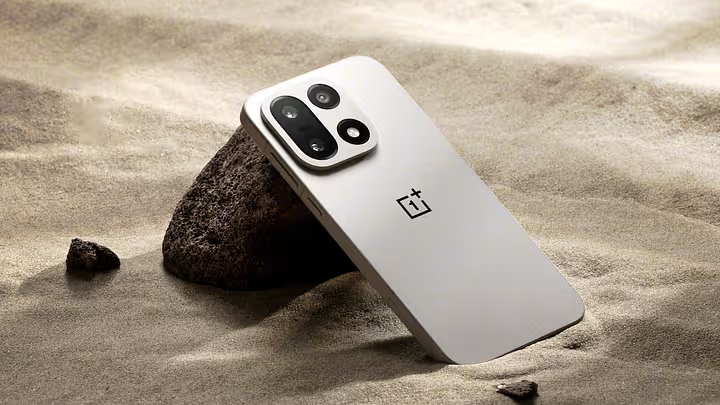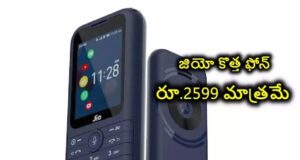 Amazon is an innovative company. It practically created online shopping, popularized e-books and made the first mainstream budget tablet. Can the company now work its mojo on smartphones? Let’s find out, as Gizmag reviews the Amazon Fire Phone.
Amazon is an innovative company. It practically created online shopping, popularized e-books and made the first mainstream budget tablet. Can the company now work its mojo on smartphones? Let’s find out, as Gizmag reviews the Amazon Fire Phone.
The Fire Phone confuses me. Amazon has earned the trust of millions of customers throughout the last couple decades, building a reputation as a company that delivers quality products for budget prices. But here we have its debut in the smartphone space, and it looks like an Android phone from 2012. Then it takes the worst thing about the Kindle Fire, cuts out the best part and covers it up with some cheap gimmicks. Yep, this phone is a little baffling.
My favorite thing about the Fire Phone is its glass back. Unfortunately that isn’t saying much, because it’s a dated design language that I thought had already run its course a couple years ago. To its credit, the phone feels good in hand and has a (somewhat) premium aesthetic. But to its detriment, the last phone I used that looked like this, the Nexus 4, cost US$350 off-contract … two years ago. The Fire Phone rings up for nearly twice that in 2014.
Then there’s the software. It runs Amazon’s forked version of open-source Android, Fire OS, which will be immediately familiar to Kindle Fire owners. To me, the Kindle Fire was always a tradeoff. You put up with some limited software (it’s basically a virtual Amazon shopping mall), but in return you get some great hardware for a terrific price. The Fire Phone has the same limited software as the Kindle Fire, but none of the bang-for-your-buck in return.
Like the Kindle Fire, the Fire Phone’s UI centers around a carousel of large icons, showing your most recent apps and content. If you want a full list of your apps, you simply swipe up to see the more conventional app grid. Sounds functional enough, right?
Well, it is functional, but I also wouldn’t necessarily call it good. For starters, there are no Google apps or services anywhere to be found (since Amazon uses the open-source version of Android, not the Google-enriched version that ships on phones from Samsung, LG and the like). But it also strikes me as primitive and not particularly attractive. It doesn’t have Google-flavored Android’s versatility, not to mention iOS’ or Windows Phone’s beauty. It’s a platform that doesn’t give you enough of a reason to invest in it.
The Fire OS’s applications all come from its own app store, with a selection that lags behind Android’s Play Store and the iPhone’s App Store. In fairness, Amazon has been building up this app ecosystem for more than three years, both on Kindle Fires and as an installable app marketplace for Android phones. But it’s still a weakness. It’s also one more reason to question why you’d want to bother switching from iOS, Android or even Windows Phone.
The Fire Phone has a 4.7-in display, which gives it 38 percent more screen area than the latest iPhones, and 33 percent less than the Galaxy S5. And the screen’s 720p resolution places it in a sharp enough, but not the sharpest range. By 2012 standards, this would be a high-end smartphone display. By 2014 standards, the screen is, at best, mid-ranged.
So what is Amazon’s case for the Fire Phone? Surely a marketing genius like Jeff Bezos will have an angle that will make your ears perk up, right? Well, unfortunately the Fire Phone’s killer features are anything but. To me, they’re little more than gimmicks that betray Amazon’s reputation as an innovator and value-conscious company.
Have you ever used an iPhone or iPad running the latest version of Apple’s software, iOS 7? If so, have you ever noticed how, when you tilt the device back and forth, the home screen background appears to move a little bit? Okay, well, imagine taking that effect and exaggerating it. Now you have what’s supposedly the Fire Phone’s first killer feature.
On the Fire Phone, Amazon calls this illusion Dynamic Perspective. It’s a 3D-like technology that uses five front-facing cameras to track your gaze. The result is that you can do things like “peek around corners” in games and see a bit more of a map than you’d otherwise be able to see, just by leaning your head or tilting the phone. I wouldn’t exactly call it 3D, but it creates an illusion of depth nonetheless.
Dynamic Perspective does very little for me. I see it as a gimmick that adds next to nothing to the experience of using a smartphone. We might see some interesting games based on the technology (the Fire Phone comes bundled with a few slightly cool examples), but those don’t come close to justifying the cost of this phone. Again, I’m at a loss for words about Amazon’s strategy here.
Closely related to Dynamic Perspective are some built-in motion gesture controls. Tilt the left side of the Fire Phone forward to see a menu pop up on the left (see above). Do the same on the right to see a new menu on the right. Again: gimmicks. Why not just swipe the damn screen to bring up a menu? You’re better than this, Amazon.
The Fire Phone’s second killer feature is called Firefly. With a long-press on the phone’s camera button, Firefly springs into action, ready to recognize objects and media in your environment. Hold the phone up to a bag of Oreos, for example, and it will pop up a little bar that lets you tap a couple times to buy it on Amazon. It also works for barcodes, QR codes, web URLs and email addresses. It can even recognize songs and TV shows. In my testing, it works well, identifying these things more often than not.
Sounds cool enough, right? Okay then, congratulations: because you can have this feature on the phone that you already own. That’s because Firefly is basically a combination of Amazon’s Flow app, which has been around for several years, along with music/TV ID services like Shazam. Download those apps on any current iPhone or Android phone and enjoy your current phone’s new “Firefly button.”
The movie ID feature is, in fairness, unique to the Fire Phone, but I wouldn’t recommend buying this phone just for that. It also has some kinks to work out. For example, I flipped on the TV and tested it on a cheesy old John Travolta movie, Broken Arrow. After listening for a few seconds, Firefly identified the movie’s title. Unfortunately it showed me the IMDB info for a 1950s TV series of the same name. Instead of Travolta, I got Tim Conway.
Like the latest Kindle Fires, the Fire Phone has a Mayday button. It’s an innovative form of customer service that lets you connect to an Amazon tech support rep 24/7, just by clicking a shortcut on your device. The rep will pop up in a video chat box: you’ll see and hear him, but he will only hear you (and your screen). It’s a handy feature for beginners. But on the Fire Phone, you might want to hit the Mayday button just to ask “why did I buy this phone?”
Battery life is solid enough, lasting nearly as long in our streaming test as the iPhone 5s did. And the Fire Phone’s 13 MP camera, when it isn’t looking for items and media for you to buy on Amazon, takes solid enough pictures.
In fact, “solid enough” is a good description for most of the phone’s features. My criticism isn’t due to Amazon launching the phone with some faulty hardware or buggy software. Everything is smooth and serviceable. Nope, the problem is that “solid” + “gimmicks” doesn’t equal something I recommend buying. Not at this price.
So who do we recommend the Amazon Fire Phone to? Well, I’m at a loss. There are so many better phones out there that cost the same as – if not much less than – the Fire Phone, that I just don’t see the value proposition here.
It’s as if Amazon’s product developers started working on this phone in 2011, and let the phones that were around then dictate its strategy. It ignores the last three years of smartphone evolution. The Fire Phone is one of the few products I’ve reviewed that I wouldn’t recommend to anyone. If Amazon cuts its price in half, then we could talk. But at its current price point, it’s too gimmicky, lacking compelling features and, contrary to Amazon’s history, just not a good deal.
The Amazon Fire Phone is available now, for $650 off-contract or $200 on-contract (exclusive to AT&T in the US). You do get a free year of Amazon Prime with your purchase, but I don’t think that’s enough to make this gimmicky and overpriced phone worth your money.
Source: http://www.gizmag.com/amazon-fire-phone-review/33122/
 TeluguNow.com Telugu cinema news, Movie reviews, Telugu Movies Updates, OTT News, OTT Release dates, Latest Movie reviews in Telugu, Swathi weekly, Telugu cinema reviews, telugu movie reviews, Telugu Actress Photos, Telugu Movie HQ Photos, Tollywood, Box office collections, Telugu Movie show times, Theater List, telugu cinema tickets
TeluguNow.com Telugu cinema news, Movie reviews, Telugu Movies Updates, OTT News, OTT Release dates, Latest Movie reviews in Telugu, Swathi weekly, Telugu cinema reviews, telugu movie reviews, Telugu Actress Photos, Telugu Movie HQ Photos, Tollywood, Box office collections, Telugu Movie show times, Theater List, telugu cinema tickets



